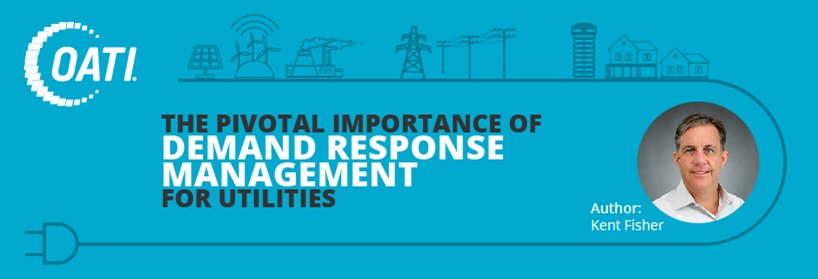Home » Blog » Grid Modernization » The Pivotal Importance of Demand Response Management for Utilities
The Pivotal Importance of Demand Response Management for Utilities
In many utility organizations, managing demand response programs is a bit like committing to exercising; we know that we need to do it because it is good for us, but it often is deprioritized over other activities. However, what if technology could help utilities plan, optimize, and execute programs for their benefit — kind of like a personal trainer at the gym?
Most utility executives understand the value of demand response to provide economic and operational benefits for their business. However, when demand response events are improperly managed, utilities lose revenue and customer satisfaction metrics may suffer. Usually, utilities experience difficulty when attempting to optimally identify and execute demand response management activities. Today’s modern Distribution Resource Management Systems (DRMS) are tackling this reality by enabling the automation of demand response events to ensure all activities are optimized for a utility’s specific operating conditions.
Inherent to automation is that configurable business workflow controls must exist throughout the software platform. Once the business rules exist, configured event triggers initiate, track, and offer end-control. For example, an integrated system load forecast is a program which can project future upcoming periods of high demand for utilities. With modern DRMS, utilities can link system load forecast with scheduling capabilities to achieve demand reduction and flatten the load to a specific level, which allows utilities to avoid an upcoming peak and optimize end customer comfort. Workflow can be either fully automated — where the system completes the demand response management activity without any human intervention — or some combination of partial automation. For example, partial automation might require stakeholder approval through a preferred communication channel (email, text, phone call, portal, etc.) before a process or event can continue.
Immediately prior to event execution, the demand response management solution should examine what Distributed Energy Resources (DERs) are available for control to ensure program success. During an event, the system monitors load shed and shift amount to ensure that what was initially forecasted is realized. In the case of a load variance, the system can add or subtract DERs during the event to smooth the peak and meet event goals. Ideally, the controlling system should be able to use triggers to flatten the load curve during events and avoid cutting the load too far and losing revenue for the utility.
To further the exercise analogy, measured performance often results in the faster realization of goals. This explains the popularity of digital scales and devices like Fitbits. These digital scales enable a person to maintain a proper record of the exercise done during a specific interval of time and motivate themselves as and when required. Similarly, in demand response management solutions, measurement and verification against computed baselines should be quickly available to stakeholders as an event “scorecard.” Behind the scenes, individual DER performance should be factored into the system asset profile as a feedback loop to improve forecasting accuracy in the future.
Utility executives know that demand response management is a key pillar to their utility’s operational health and bottom line, especially with the proliferation of DER in their service territories. Like a training coach that guides you in the gym to help you meet your fitness goals, modern DRMS, like OATI’s Demand Response Management System, can help utilities plan and manage operational goals and revenue. By using a system that operates throughout the full demand response management lifecycle and uses business logic and triggers to automate events, utilities can realize maximum economic and reliability benefits with minimum staff oversight.
Let technology and automation do the workout for you to get a healthier bottom line. To learn more about OATI Smart Grid solutions, check out the OATI webSmartEnergy suite of solutions or contact Sales@oati.net.
About the Author:
Mr. Kent Fisher is a senior contributor with extensive experience driving value throughout the business cycle. An Account Executive at OATI, his background includes selling and leading complex, multi-million dollar enterprise software and system integration projects in domestic and international markets in a variety of industries, including utilities, broadcast media, and international development. Mr. Fisher’s experience includes a demonstrated track record in sales, account management, implementation project management, and process reengineering.
- September 25, 2018
